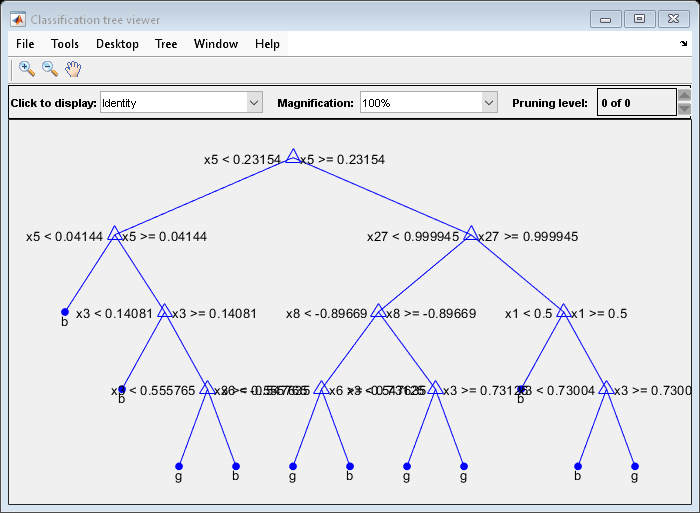CompactClassificationEnsemble
Compact classification ensemble
Description
Compact version of a classification ensemble. The compact version does not include the data for training the classification ensemble. Therefore, you cannot perform some tasks with a compact classification ensemble, such as cross validation. Use a compact classification ensemble for making predictions (classifications) of new data.
Creation
Create a CompactClassificationEnsemble object from a full ClassificationEnsemble or ClassificationBaggedEnsemble model object by using compact.
Properties
Object Functions
compareHoldout | Compare accuracies of two classification models using new data |
edge | Classification edge for classification ensemble model |
gather | Gather properties of Statistics and Machine Learning Toolbox object from GPU |
lime | Local interpretable model-agnostic explanations (LIME) |
loss | Classification loss for classification ensemble model |
margin | Classification margins for classification ensemble model |
partialDependence | Compute partial dependence |
plotPartialDependence | Create partial dependence plot (PDP) and individual conditional expectation (ICE) plots |
predict | Predict labels using classification ensemble model |
predictorImportance | Estimates of predictor importance for classification ensemble of decision trees |
removeLearners | Remove members of compact classification ensemble |
shapley | Shapley values |
Examples
Tips
For an ensemble of classification trees, the Trained property
of ens stores an ens.NumTrained-by-1
cell vector of compact classification models. For a textual or graphical
display of tree t in the cell vector, enter:
view(ens.Trained{for ensembles aggregated using LogitBoost or GentleBoost.t}.CompactRegressionLearner)view(ens.Trained{for all other aggregation methods.t})
Extended Capabilities
Version History
Introduced in R2011aSee Also
fitcensemble | ClassificationEnsemble | ClassificationBaggedEnsemble | predict | compact | fitctree | view | compareHoldout
